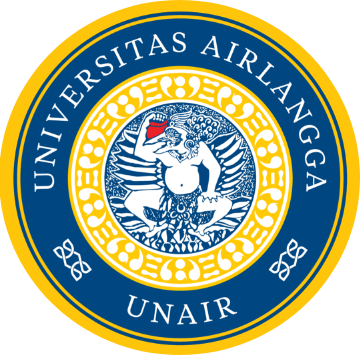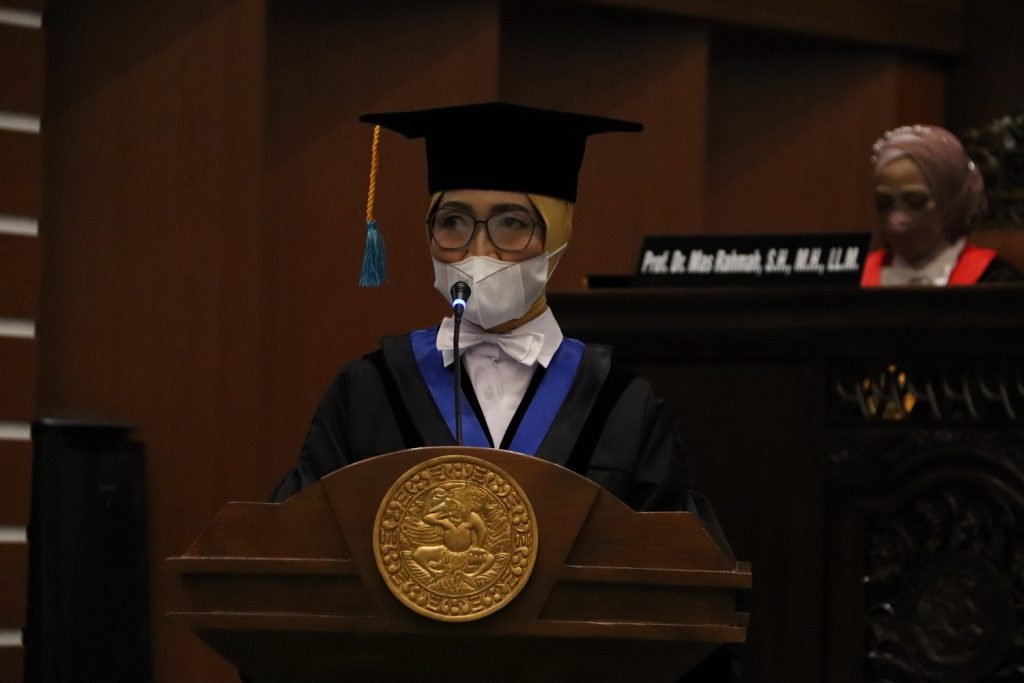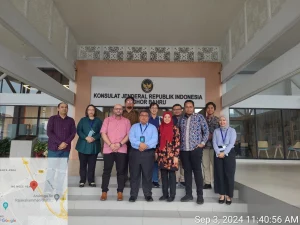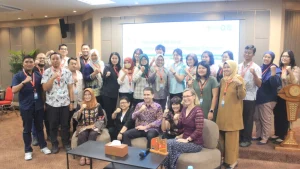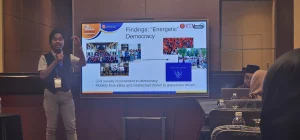UNAIR NEWS – Prof Dr Dra Nanik Siti Aminah MSi was officially inaugurated as Professor of Biomaterial Organic Chemistry from Faculty of Science and Technology (FST) Universitas Airlangga (UNAIR) on Wednesday, June 08, 2022. At the inauguration, she presented an oration titled Conservation and Downstreaming Steps for Phenolic-based Tropical Bioresources Products.
Prof Nanik explained that plants can produce secondary metabolites compounds to communicate with their environment. In addition, the secondary metabolite compound also works as a plant marker.
“Phenolic compound group reported to have antioxidant, antibacterial, anti-inflammation, and antimutagenic activity,” said the Chemistry Department lecturer of FST UNAIR.
Plants could produce 20 types of secondary metabolites compounds. According to LIPI data in 2017, Indonesia, the second mega biodiversity country globally, has a botanical diversity of 28.965. The high number of this botanical diversity could produce a secondary phenolic compound of as many as 579.300 types.
“What a fantastic number, therefore, research to reveal the existence of secondary metabolite compounds in plants is necessary,” expressed Prof Nanik during the inauguration in the Garuda Mukti Hall of UNAIR.
The reveal of phenolic compounds from plants is aimed to gain information regarding the molecular structure and biological activity of the compounds in each target plant species. “The acquired data could be one strong foundation to improve natural resource conservation effort in Indonesia,” she expressed.
In the last 20 years, Prof Nanik and her research group have mapped out phenolic compounds from woody plants, tubers, Indonesian herbs, and herbs from Myanmar.
“43 phenolic compounds have been successfully isolated, molecular structure have been determined, and have been through a trial. The pure acquired isolates have shown antioxidant, antidiabetic, anticancer, and anti-malarial activity,” revealed the alumna of Chemistry UNAIR ‘90.
Downstreaming effort
In the scientific oration, Prof Nanik expressed that fundamental research results must be downstreamed so that it does not only produce journal publications but could be directly applied to the community. Prof Nanik has begun a research downstream process with gambir plant with Latin name of Uncaria gambir.
“Gambir powder contains phenolic compound from flavonoid group: catechin. Pure catechin production from gambir with laboratory-scale technology was successfully done in 2017,” she elaborated.
Another effort in gambir downstream is changing the ethyl-acetate extract of gambir powder into nano form through the nanoencapsulation process. “This nanoencapsulation process was used to handle herbal product issues that have potent biological activity in vitro if later found less potent when it was proceeded to undergo in vivo trial,” shared the professor born in Tulungagung.
“Along with the finishing of research target, our research group also did various experiments to develop various herbal material with nanotechnology with potential to become a phytocosmetic product,” she continued.
Nano herbal material equipped with NDDS has helped herbal bioactive components to be infused to the sites targeted so that it could increase bioactivity from the herbal ingredient.
The phytocosmetics product that will be developed is phytocosmetics which focuses more on skincare products. “We hoped that the result achieved will be utilized by wide communities,” Prof Nanik concluded. (*)
Author: Thara Bening
Editor : Binti Q. Masruroh

